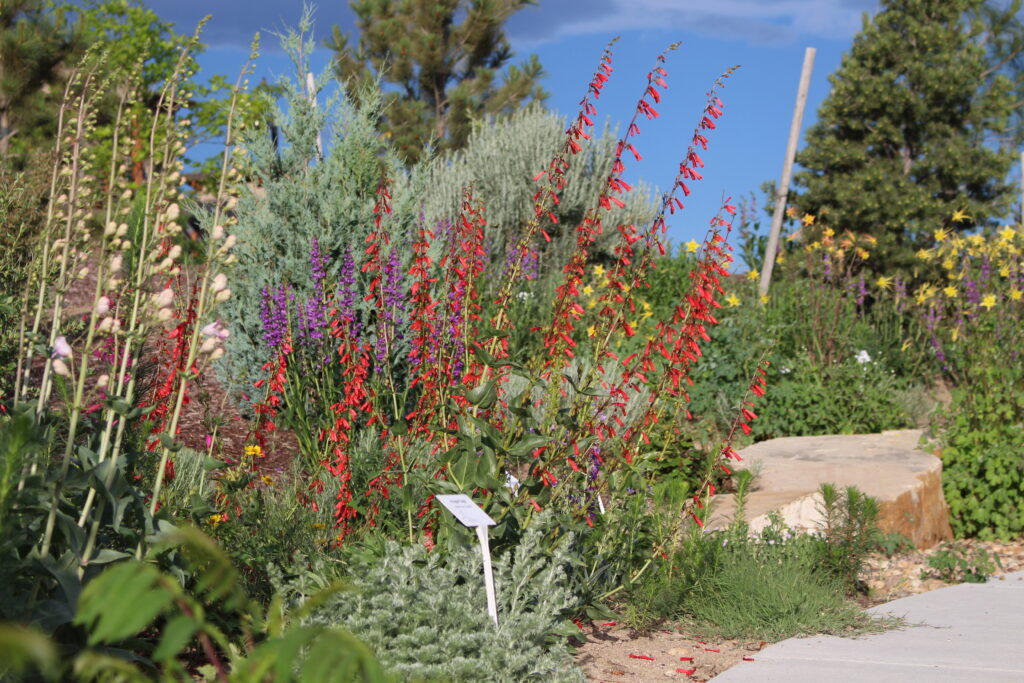
In Colorado Real Estate Journal, November 4, 2020 – by David Crowder, Vice President of Community Development, McWhinney, and General Manager, Centerra
This year, it’s difficult to not see evidence of the climate crisis right in our own backyard. From battling the largest wildfires in state history and experiencing extreme droughts, to setting records for both heat and snow in just 48 hours, this summer was a wake-up call for Coloradans.
Colorado typically receives only 12-14 inches of precipitation per year, yet the typical household needs about 0.4 to 0.5 acre feet of water per year (approximately 150,000 gallons) to support the
demands of the home and landscaping. Water supply is top of mind, as usage among Denver Water customers this July was 11% higher than the five-year average. In Fort Collins, residents are facing restrictions on water usage as city officials anticipate a potential water shortage in the region.
As we embrace Colorado’s booming population growth, we also must consider the ways we can mitigate further strain to natural landscapes and resources. Not only does this impact the environmental health of our communities, but also it impacts long-term affordability as raw water prices continue to rise. The real estate industry has an opportunity to take more prominent
action as a role model for a path forward. From educational initiatives to embracing innovative water conservation and landscape management practices, developers can weave conservation into
the communities in which they invest, to ensure positive and lasting changes for Colorado.
To do so, strategic initiatives must be established. Earlier this year, McWhinney introduced the Water Conservation and Sustainability Initiative in its Centerra master planned community in Loveland, in partnership with environmental nonprofit High Plains Environmental Center. The initiative places a heightened emphasis on preserving resources, conserving water, protecting and establishing habitats and maintaining affordability. As a Colorado-based sustainable-driven developer, the initiative is designed as a roadmap to support others in establishing or enhancing eco-friendly operations in Colorado’s developments. And as we learn more about sustainable practices, we uncover the benefits of incorporating conservation into business practices.
Key tenants for developers to include in sustainability plans include:
• Achieving a sustainable ecosystem begins with education. The introduction of greenhouses and community gardens and the programming to engage with residents offers a natural learning
environment for residents, students and children to see firsthand examples of Colorado’s natural landscape and the importance of sustainability. We helped establish and put funding mechanisms in place to form and support HPEC, which addresses these needs in Centerra.
• The development industry ought to consider the life cycle costs of landscape by including not only installation prices in their design analysis, but also water and maintenance costs for the entirety
of a project. Water-wise landscaping that uses native plants over exotic plants significantly lowers water use and maintenance. For instance, while Bluegrass turf commonly is used in the region,
this introduction of foreign plants disrupts the natural ecosystem and requires high maintenance, pesticides, fertilizers and a significant amount of water. In fact, a transition to alternative turfgrass can yield approximately 40% or more water savings over conventionally irrigated Kentucky Bluegrass. The conversions to naturalized nonnative grasslands or a variety of native prairie species have the potential to result in a 70% or greater water savings and benefit pollinators as well.
• Other considerations to build a water-wise landscaping program include taking a closer look at soil management programs and computer-controlled irrigation systems. Developers can provide irrigation guidelines for homeowners and commercial users related to watering times for plants and types of irrigation systems. From the management of topsoil stockpiles to the management of weeds and weed seeds, gaining a better understanding of the microsoil type on each construction project and what is needed for any amendment treatments will encourage deeper root penetration, ultimately helping to reduce long-term watering requirements.
• Roadways are an often overlooked opportunity. Given the heightened wear and tear of landscapes along roadways, developers ought to carefully select types of grasses and native plants that can withstand the over-splash of the deicer and salt treatments used during winter storm plowing. In partnership with HPEC, we recently initiated a case study within Centerra testing several different species, the results of which we intend to share widely in the industry. For Colorado, smart development ties back to water conservation and being sustainable stewards of our land. Water is our most precious resource, and while these recommended changes in landscaping and a renewed focus on native plants seem like small steps forward, they have major impacts in the life cycle of our state’s water consumption and affordability. As developers, we need to take the lead by educating ourselves on what can be done within our existing and future projects to promote sustainability.
Incorporating landscape design requirements, encouraging behavior shifts, changing perceptions and promoting education will lead us to a brighter, more environmentally conscious Colorado.

